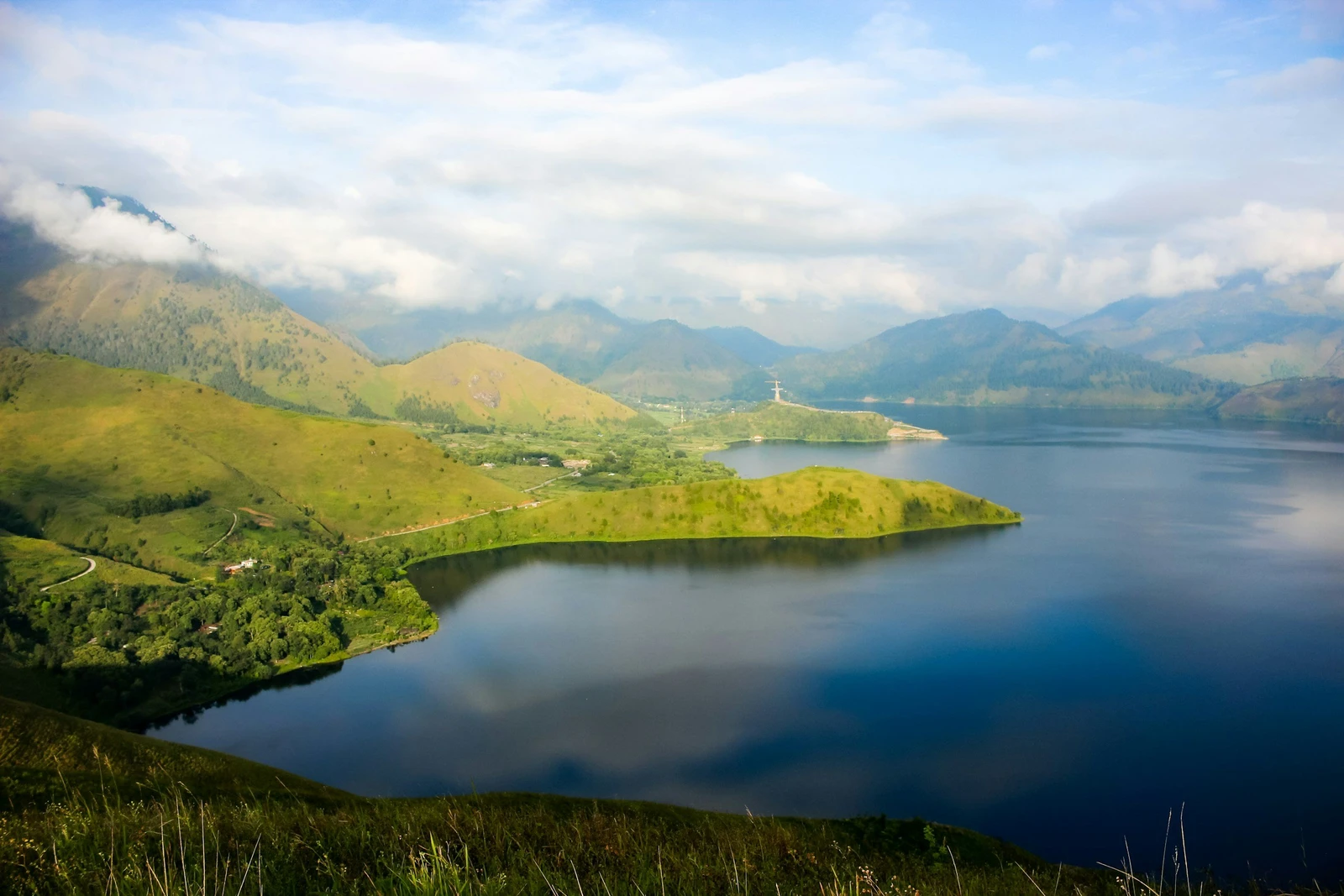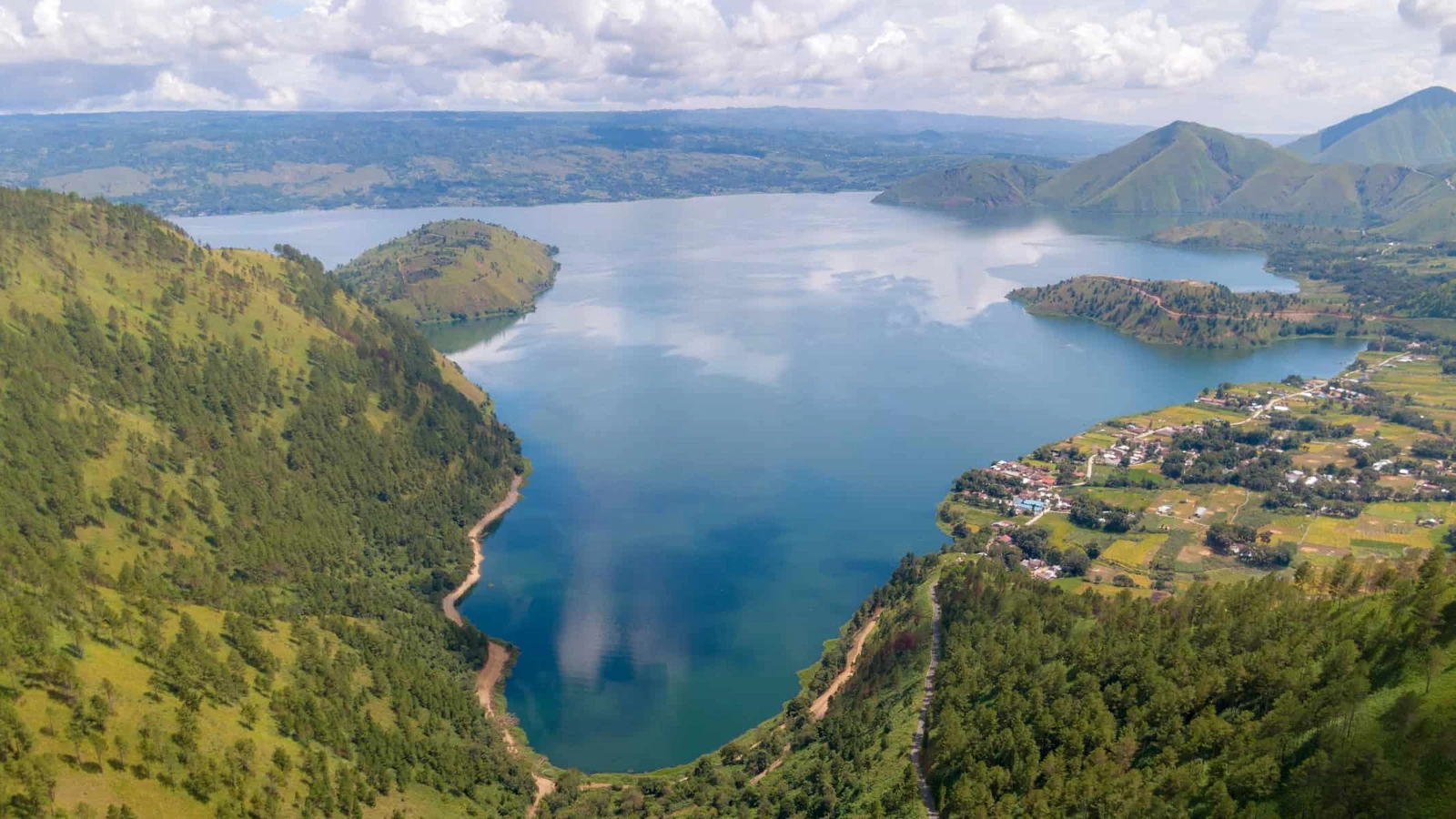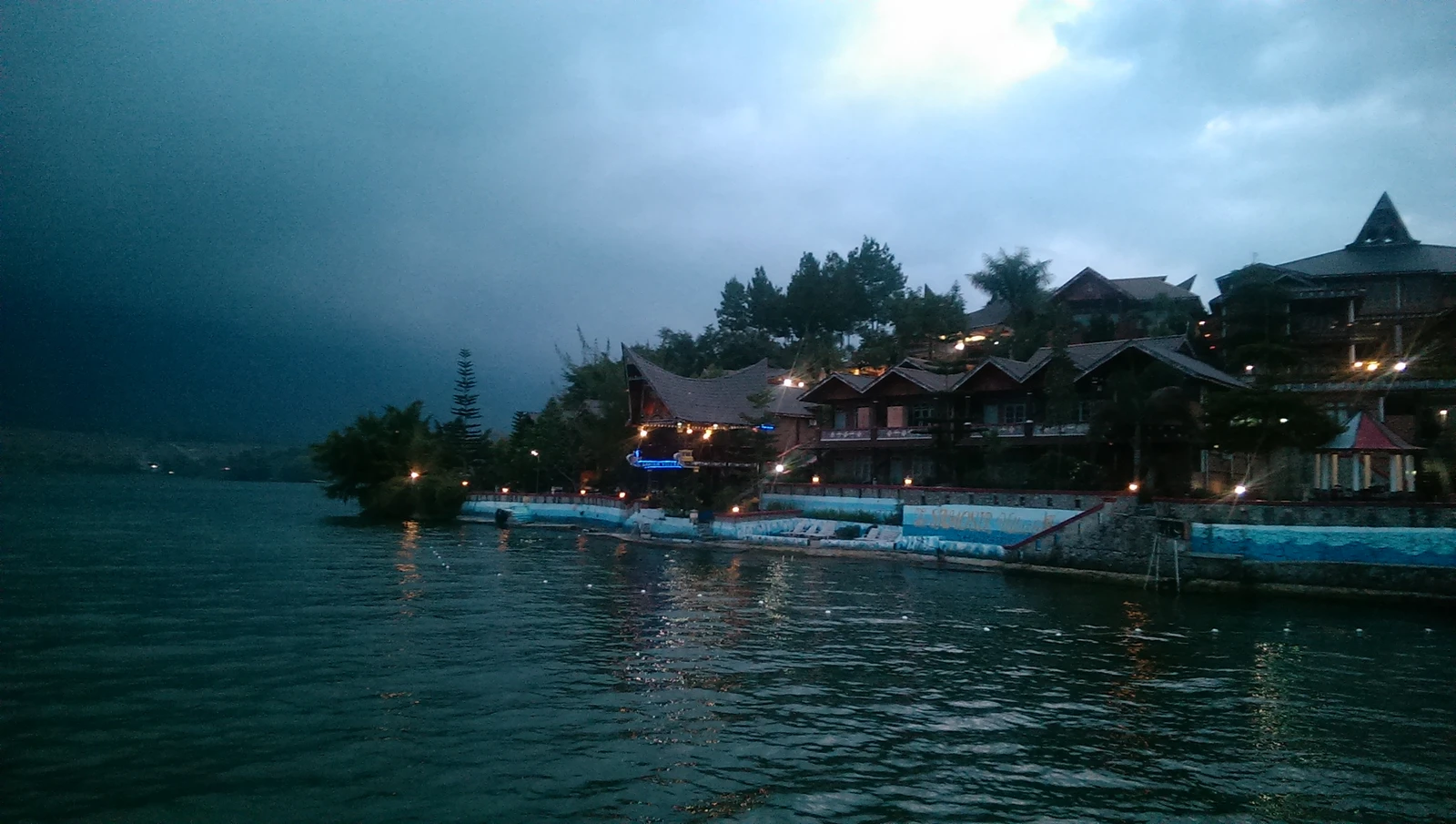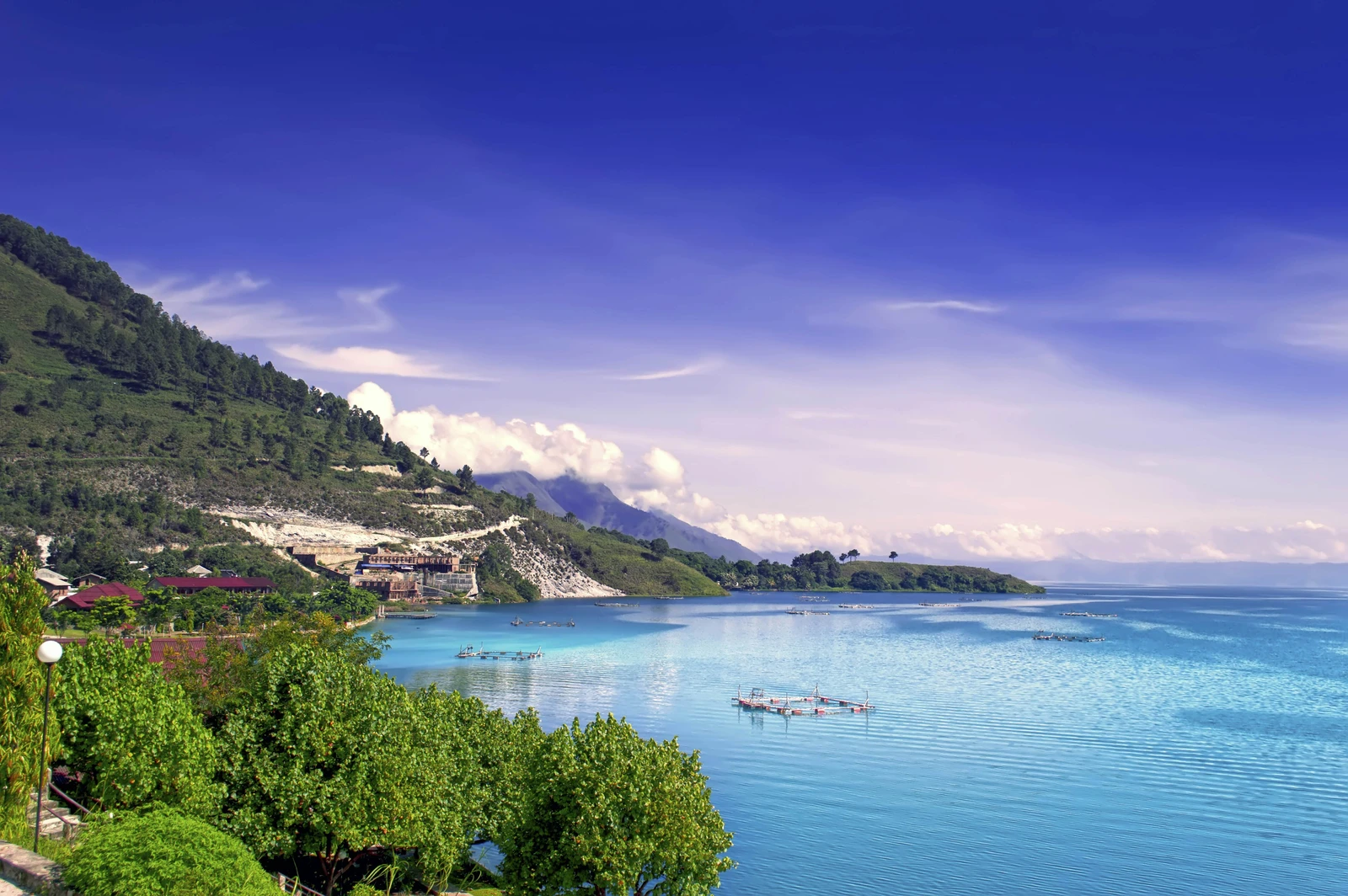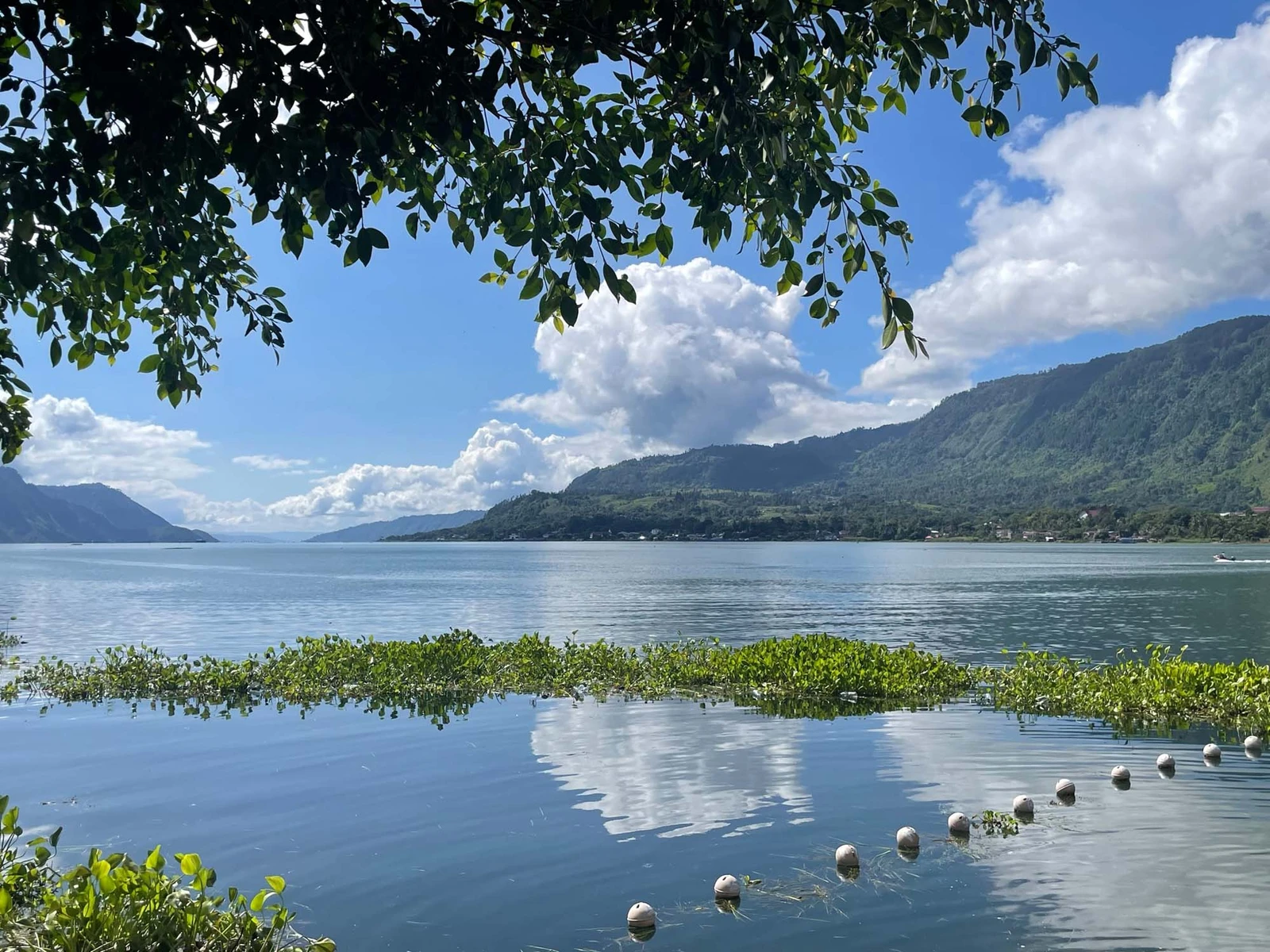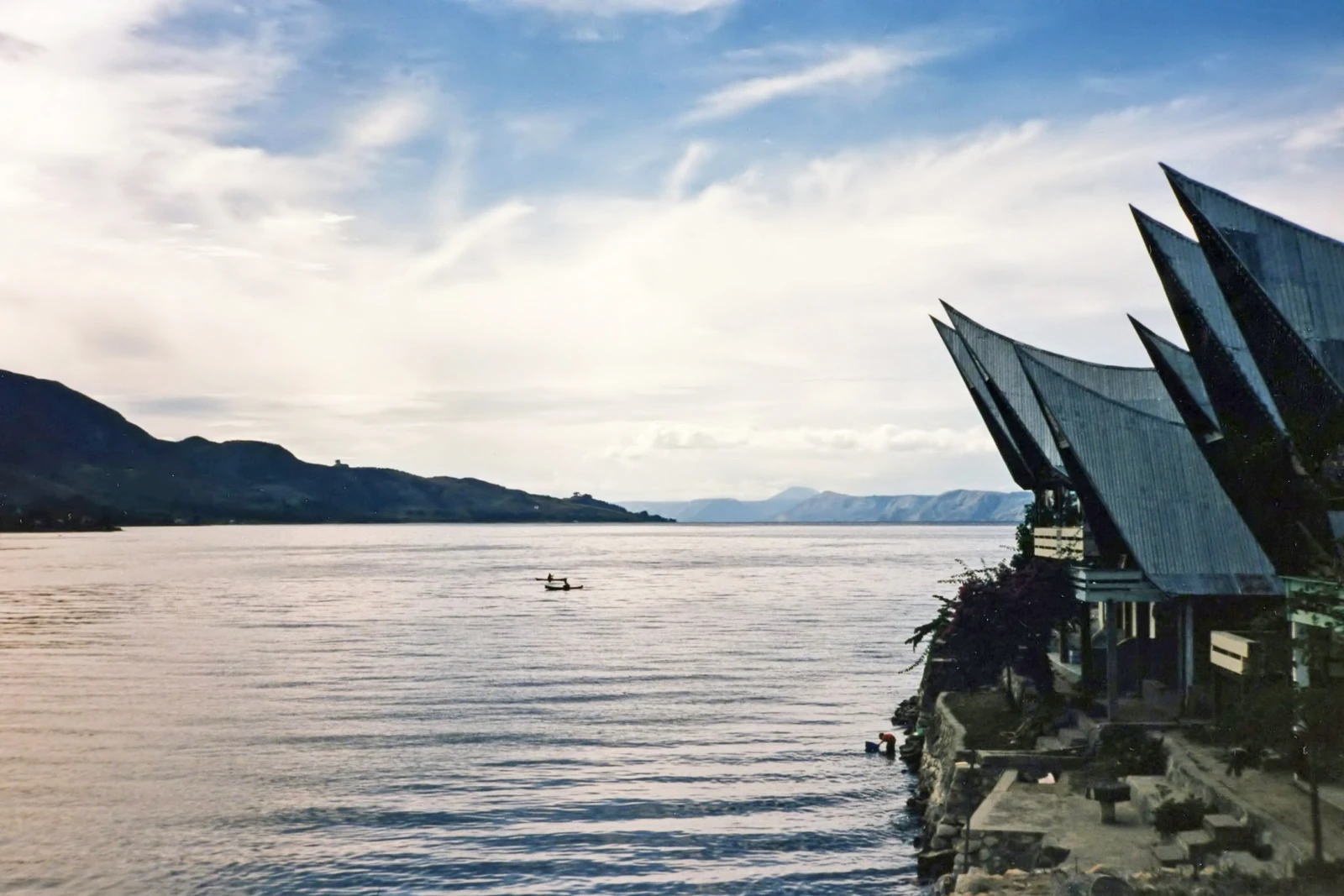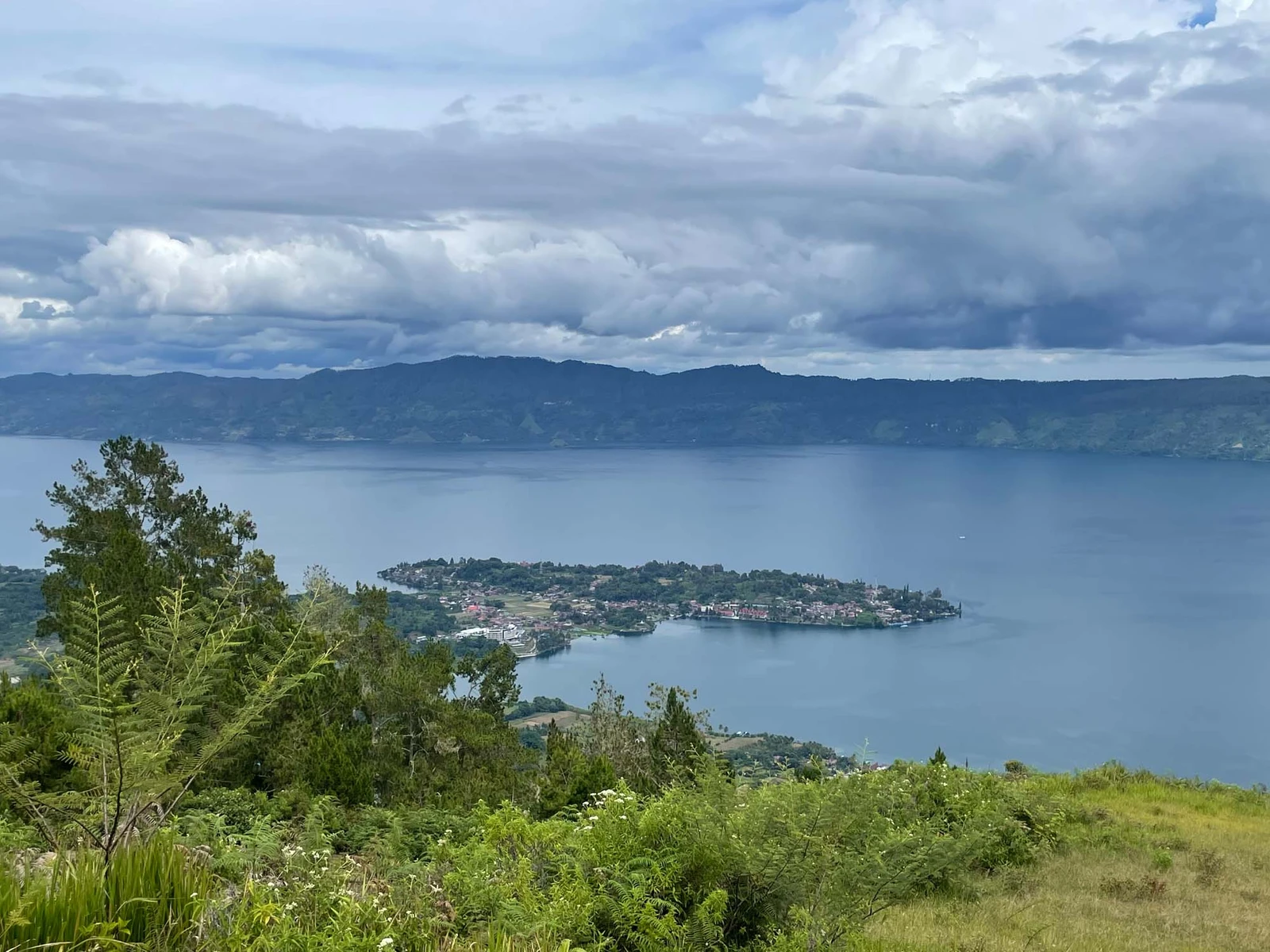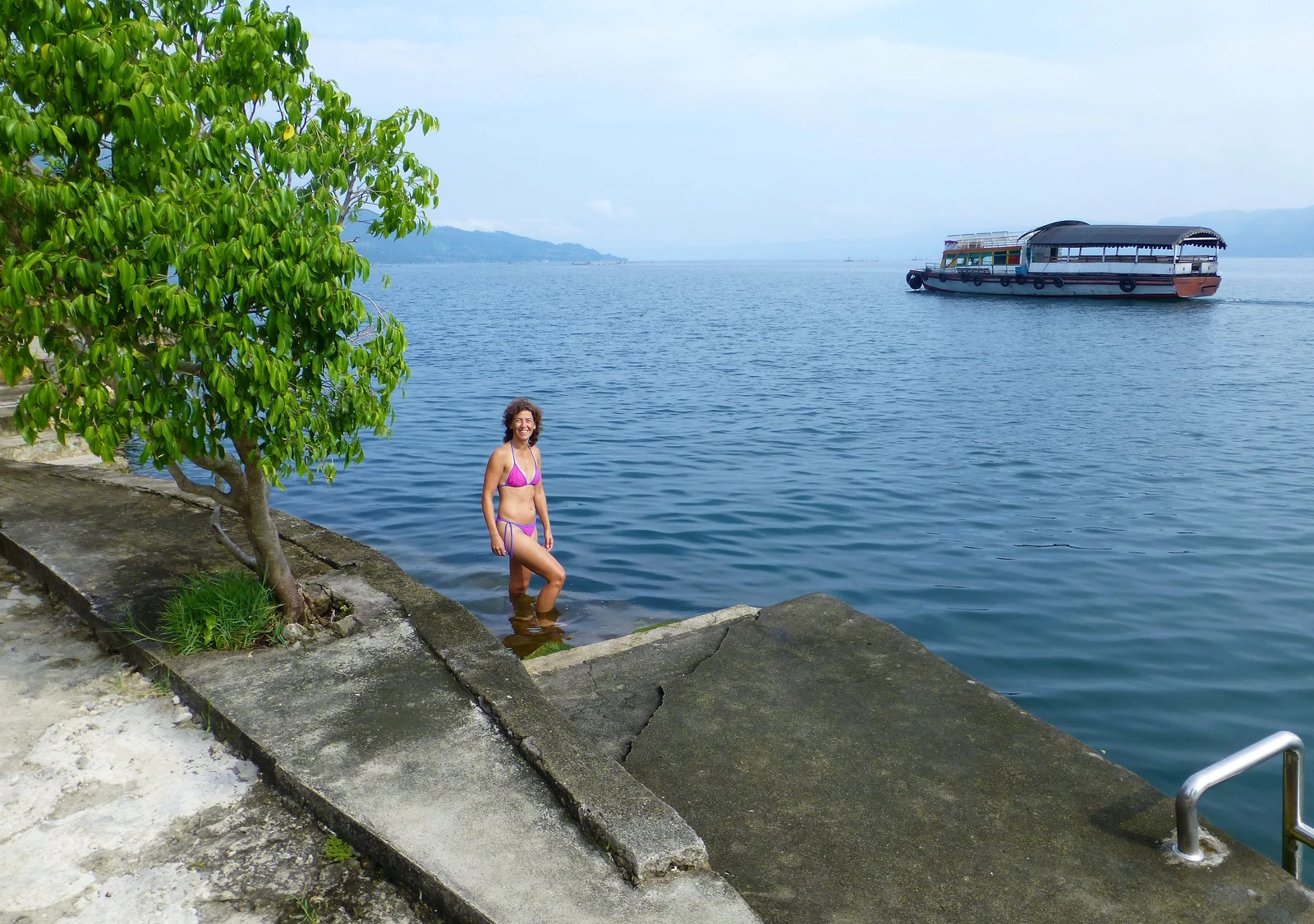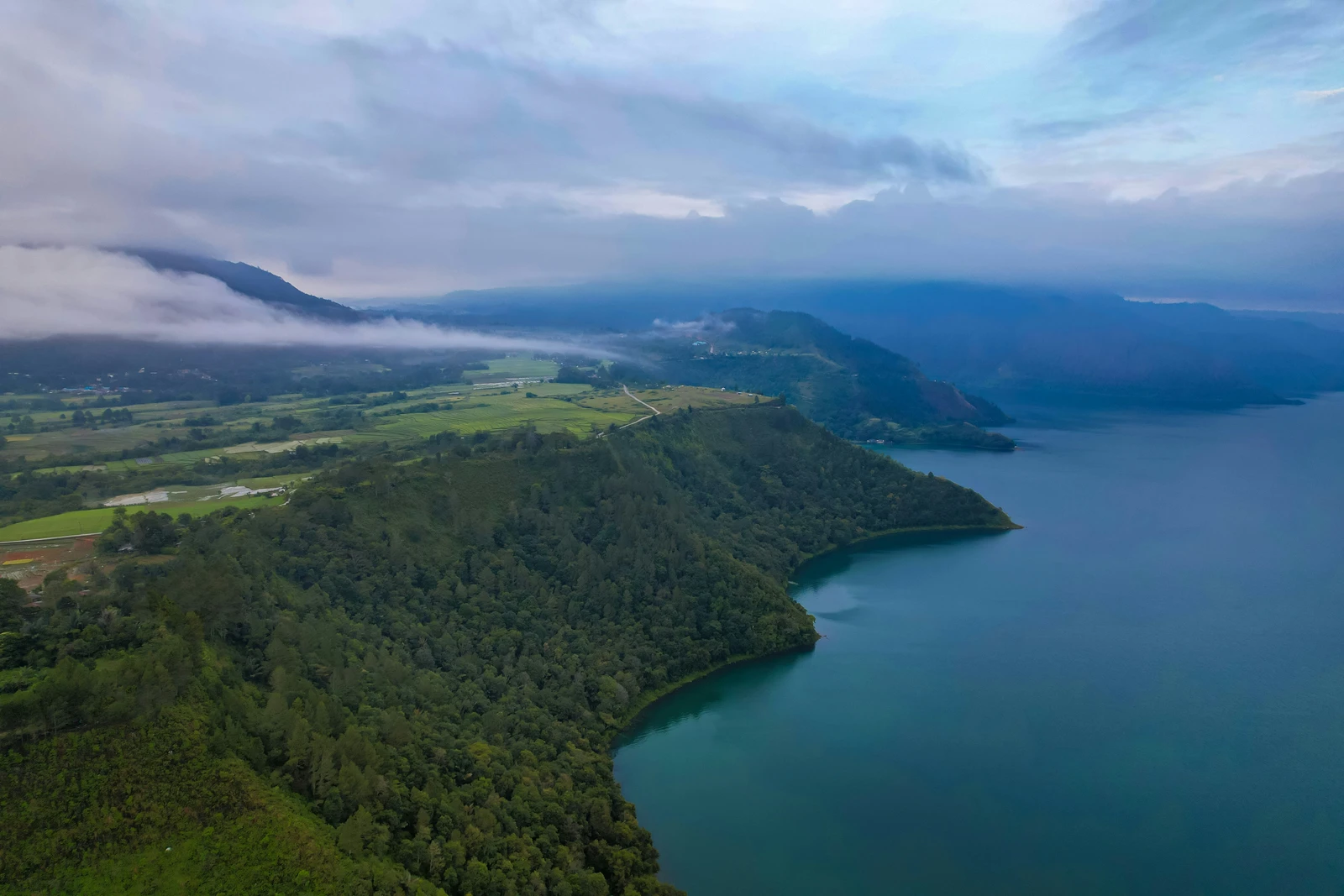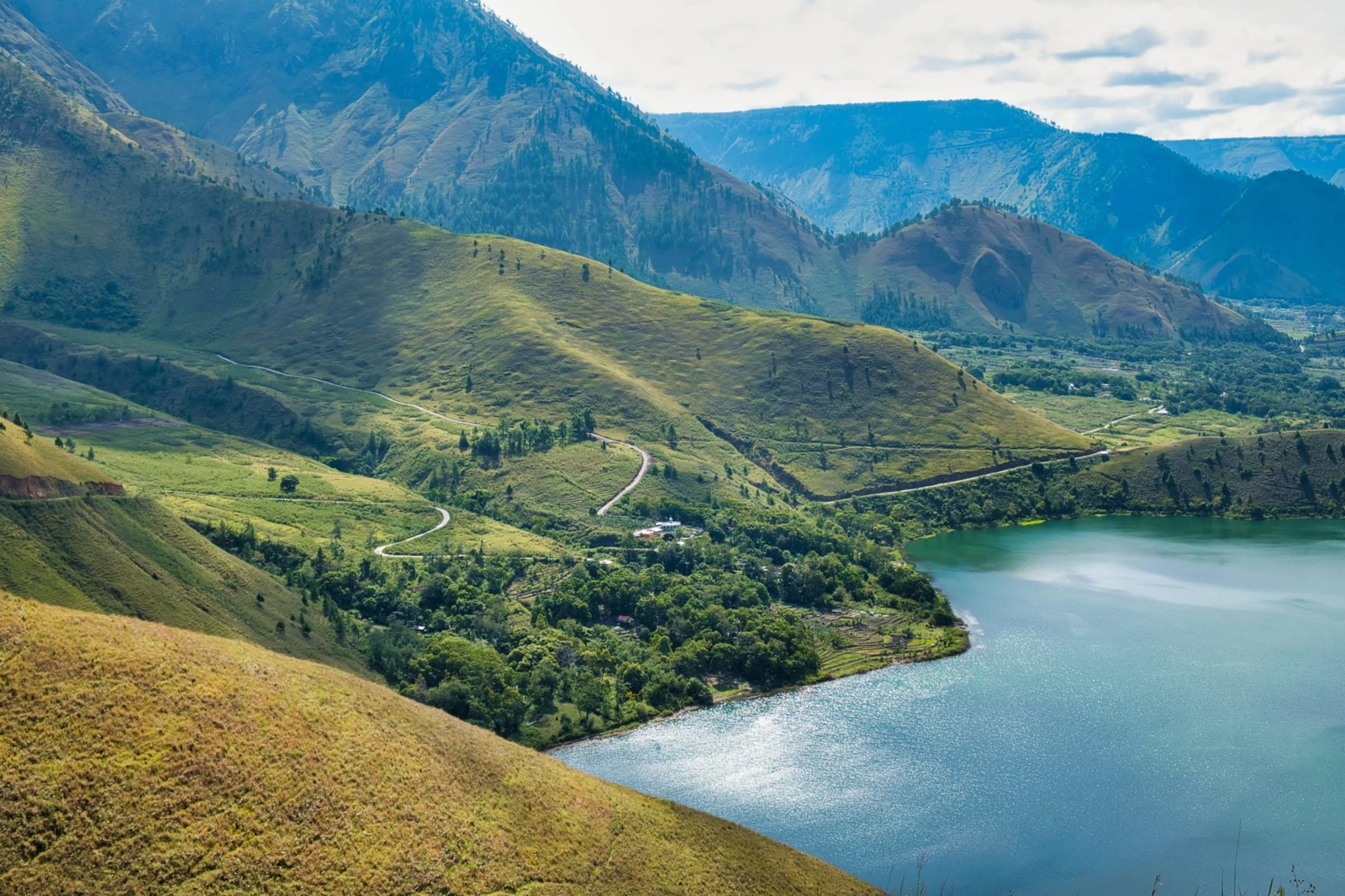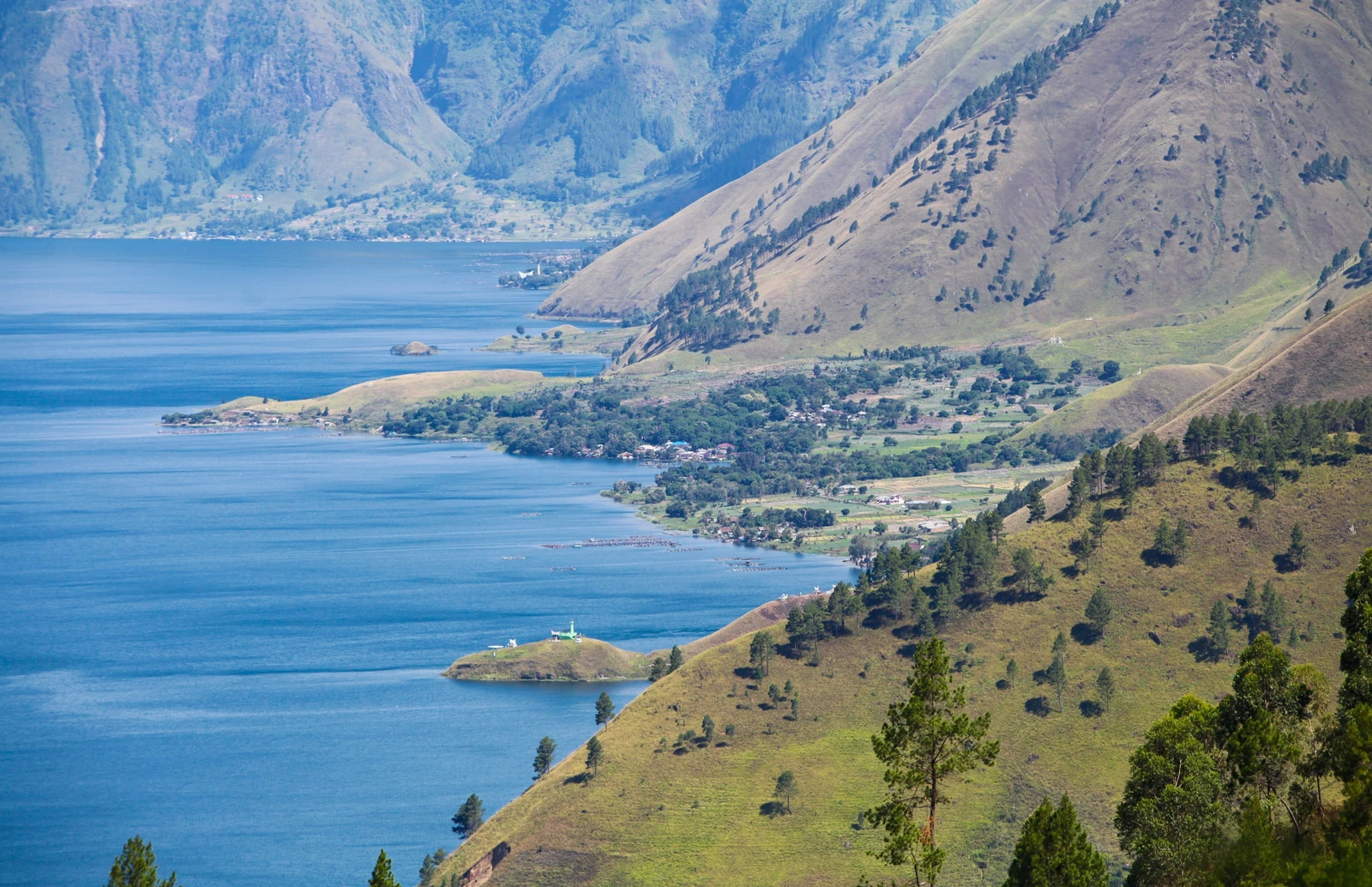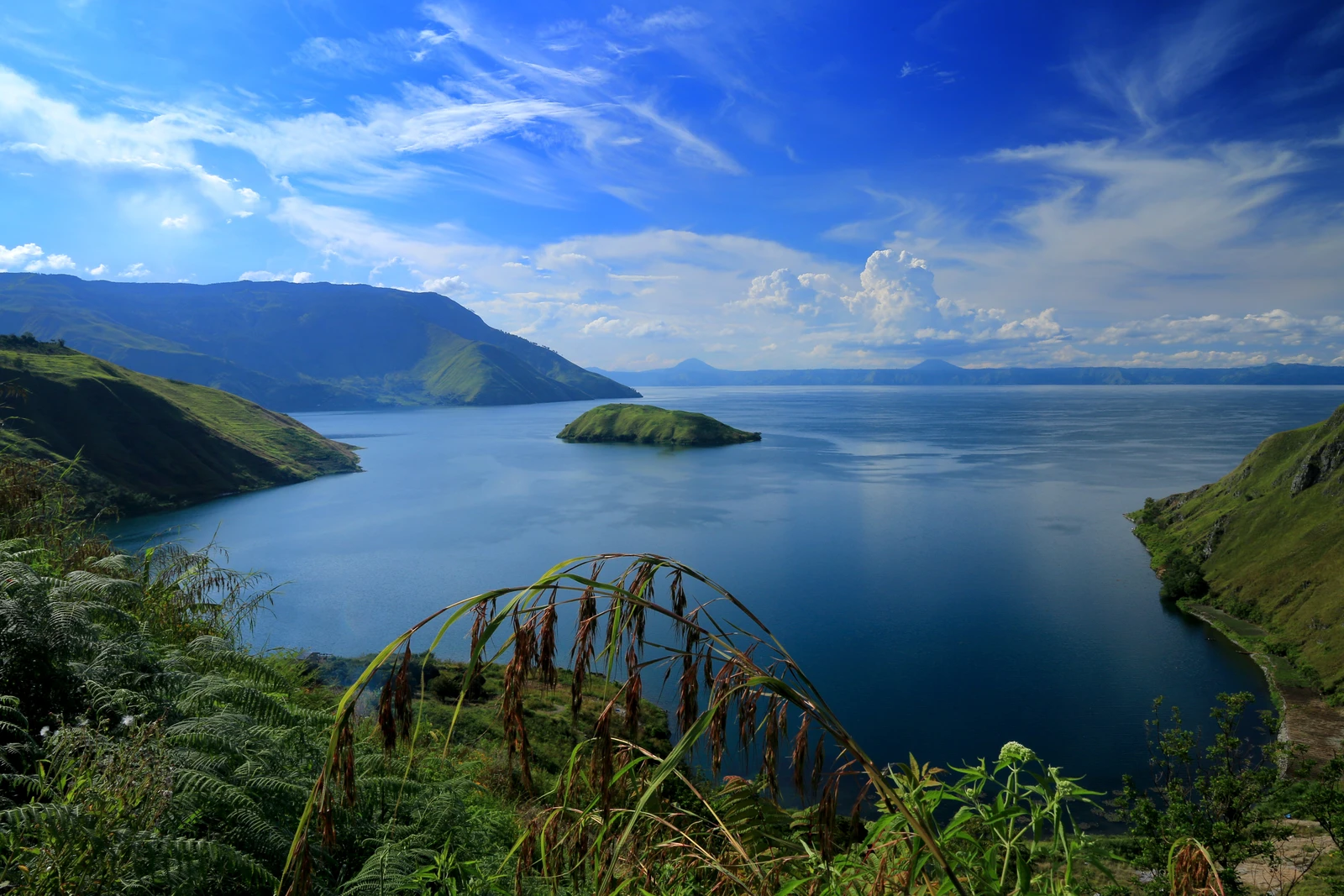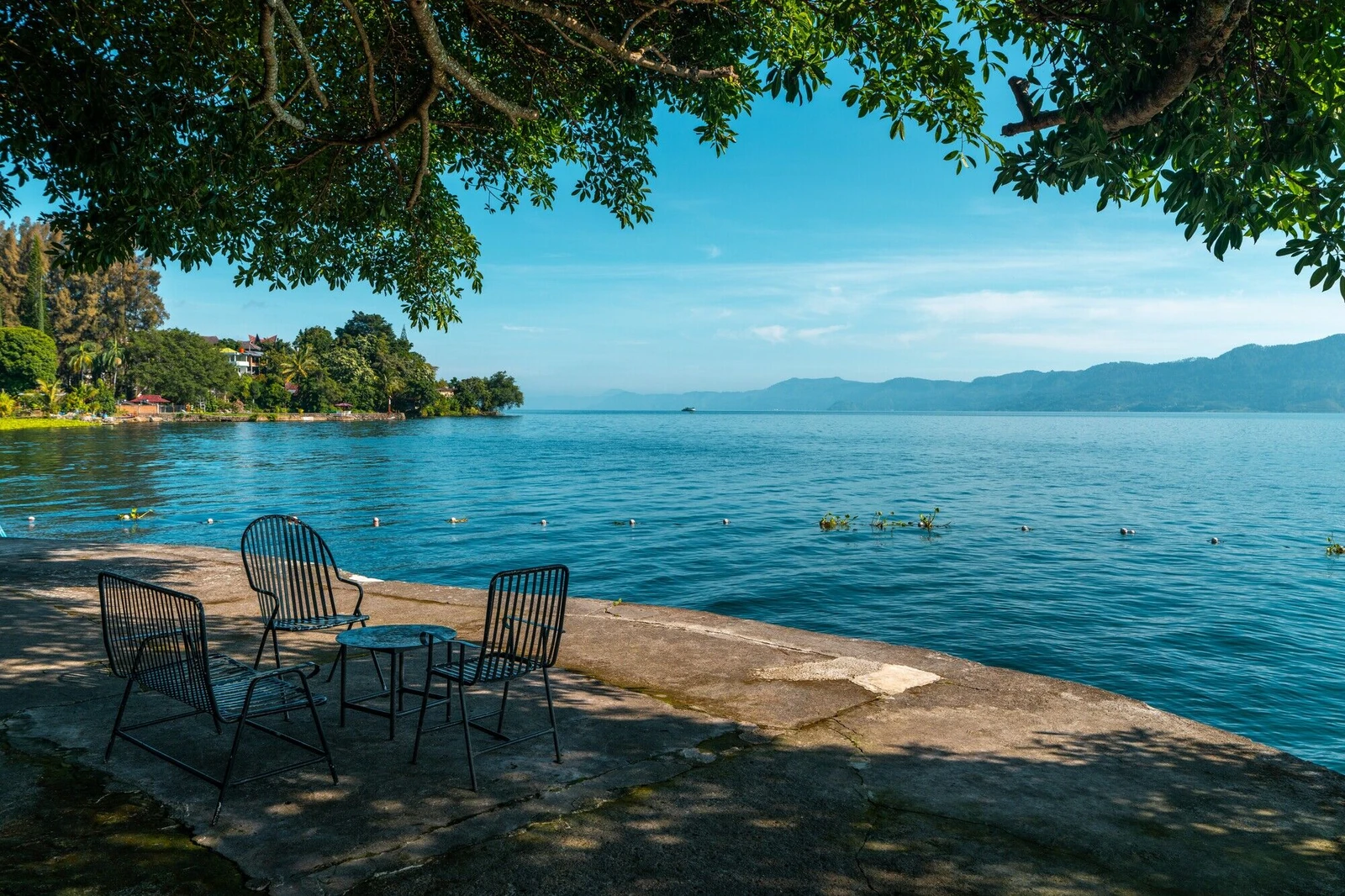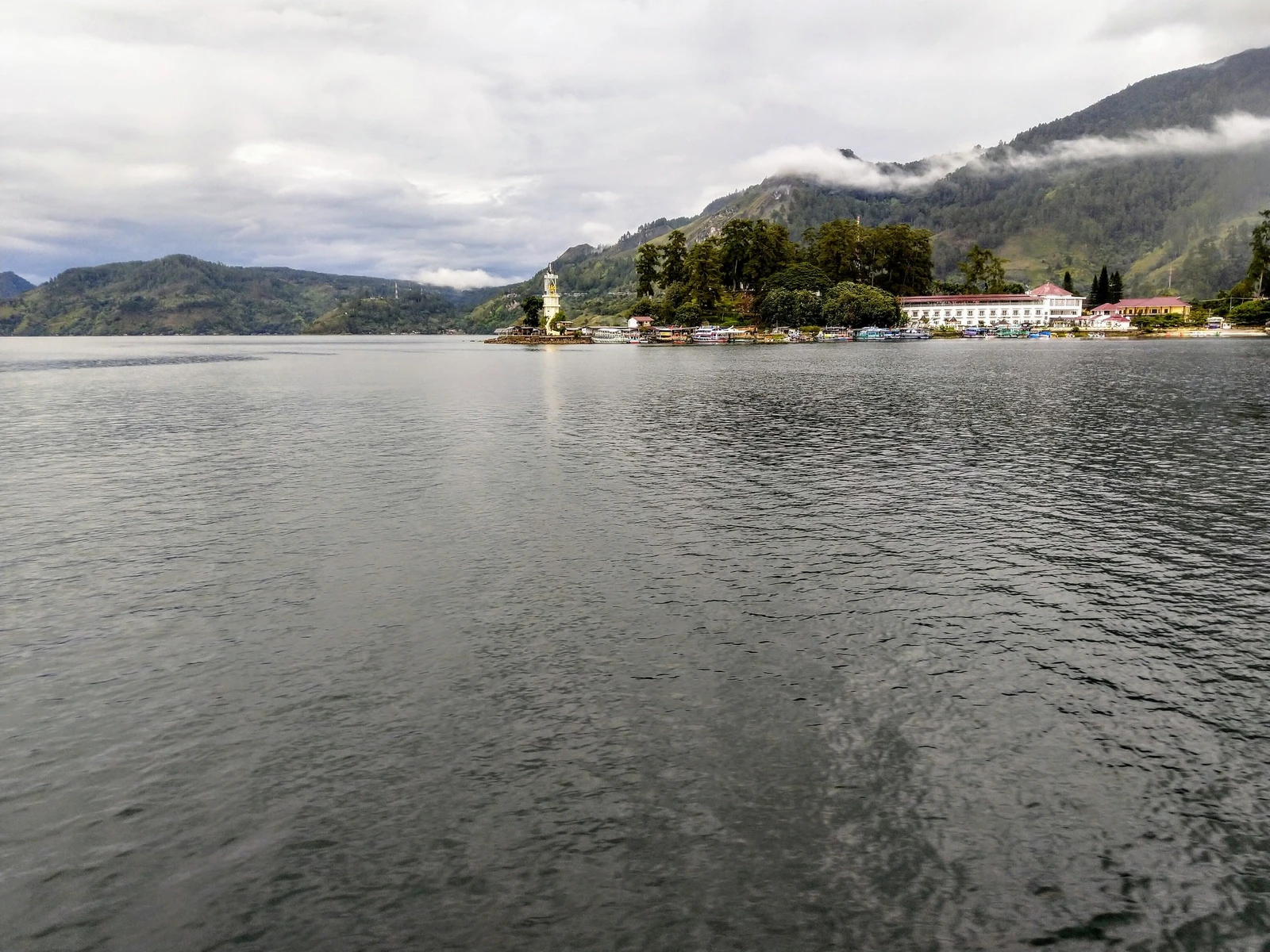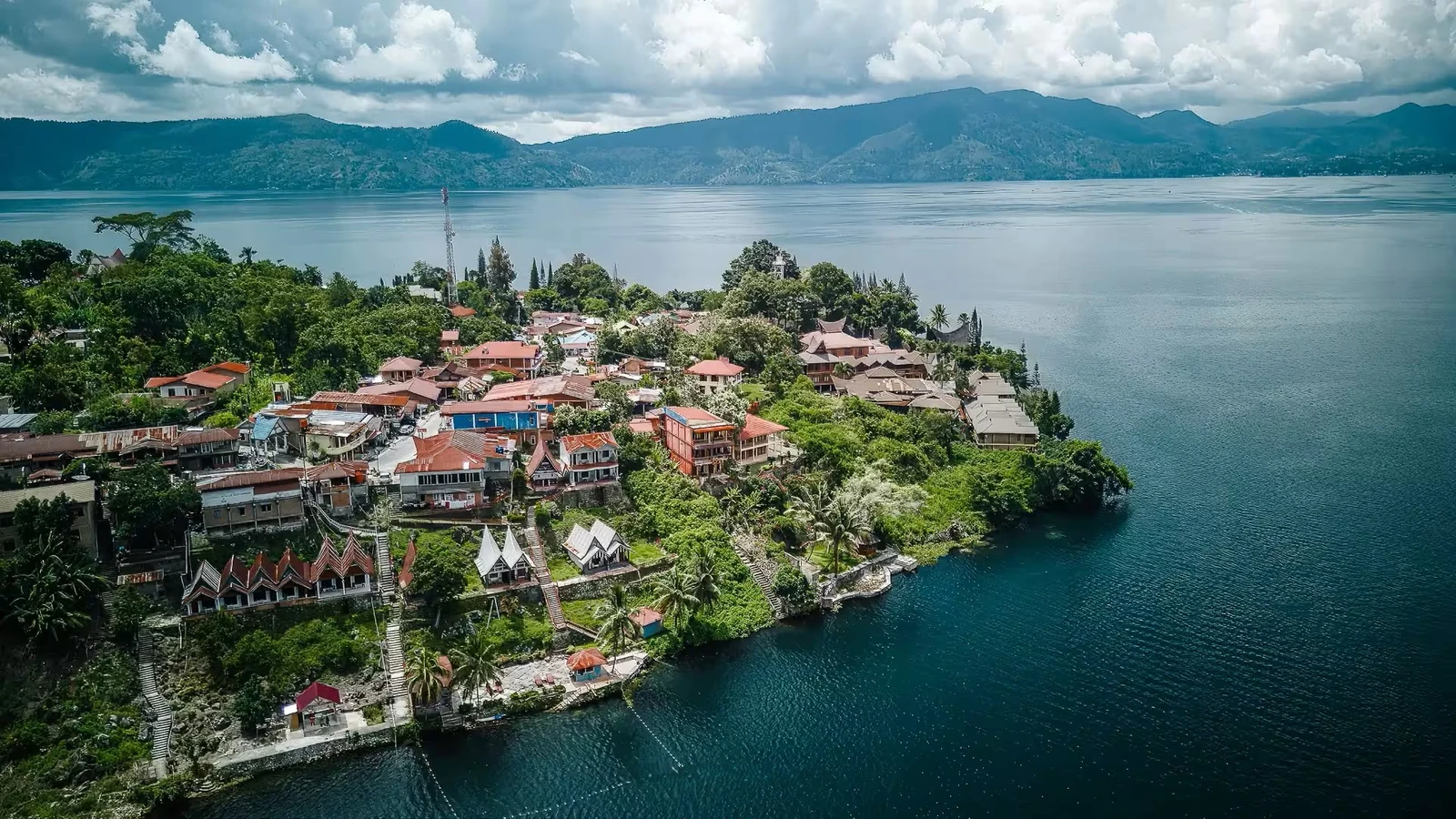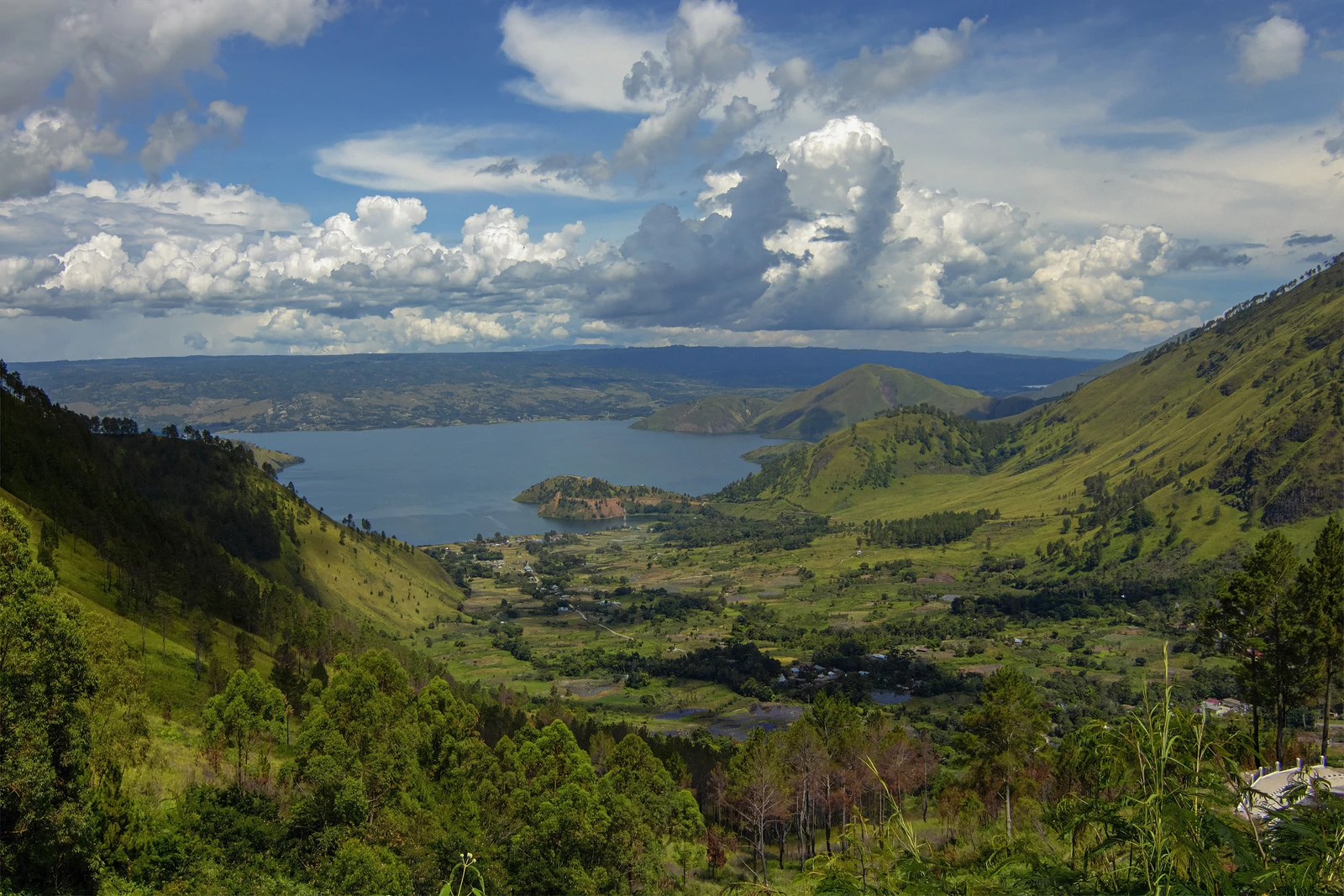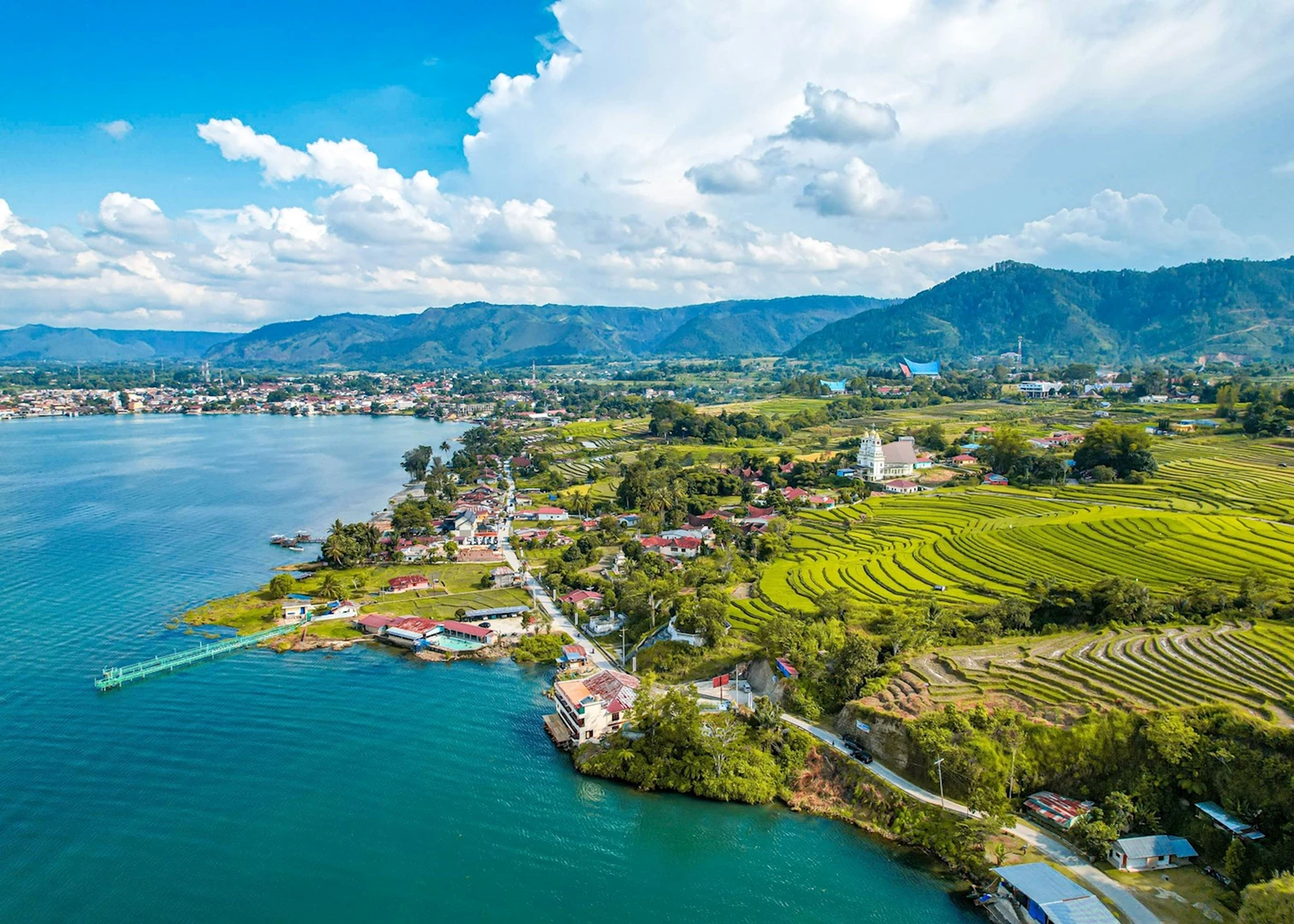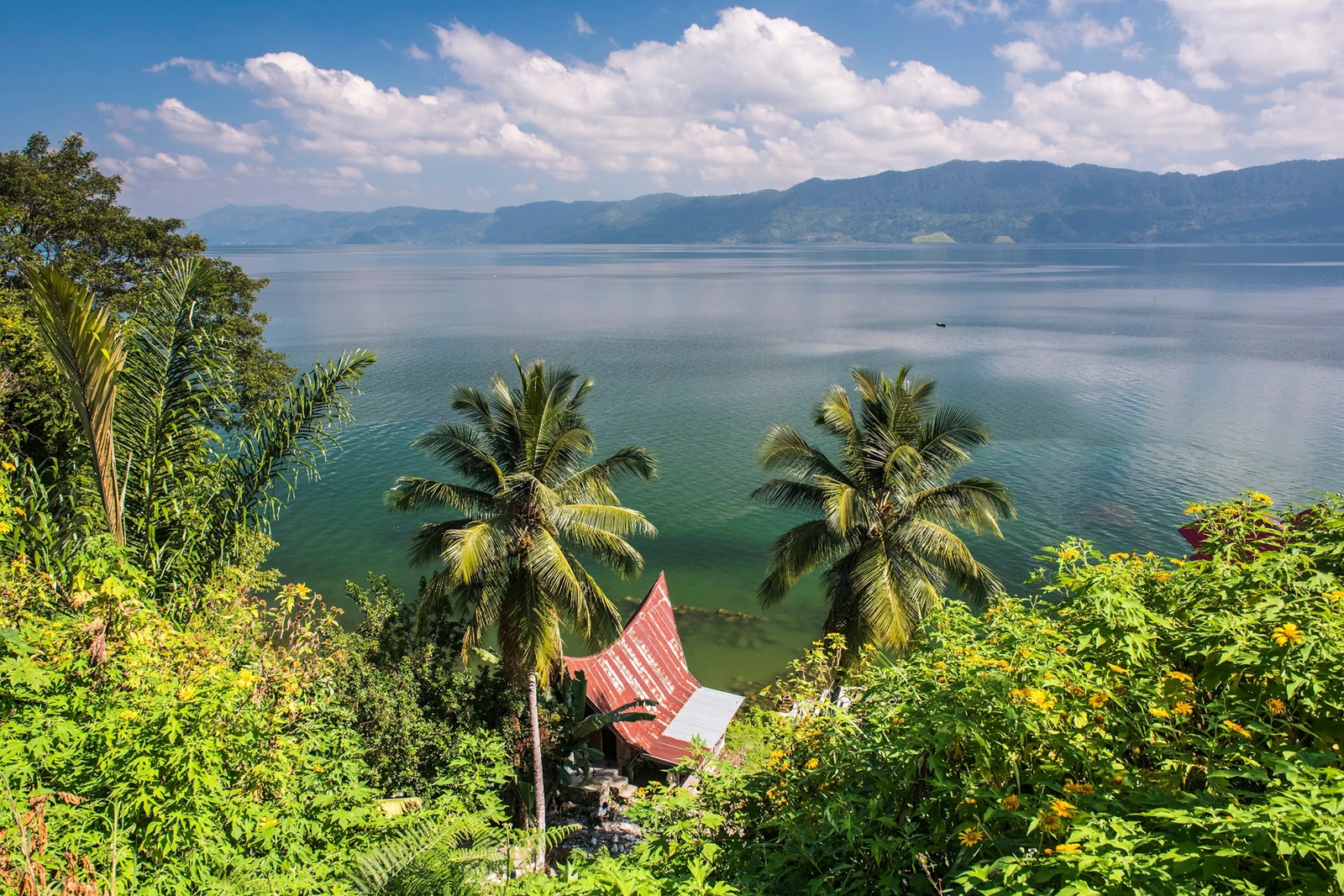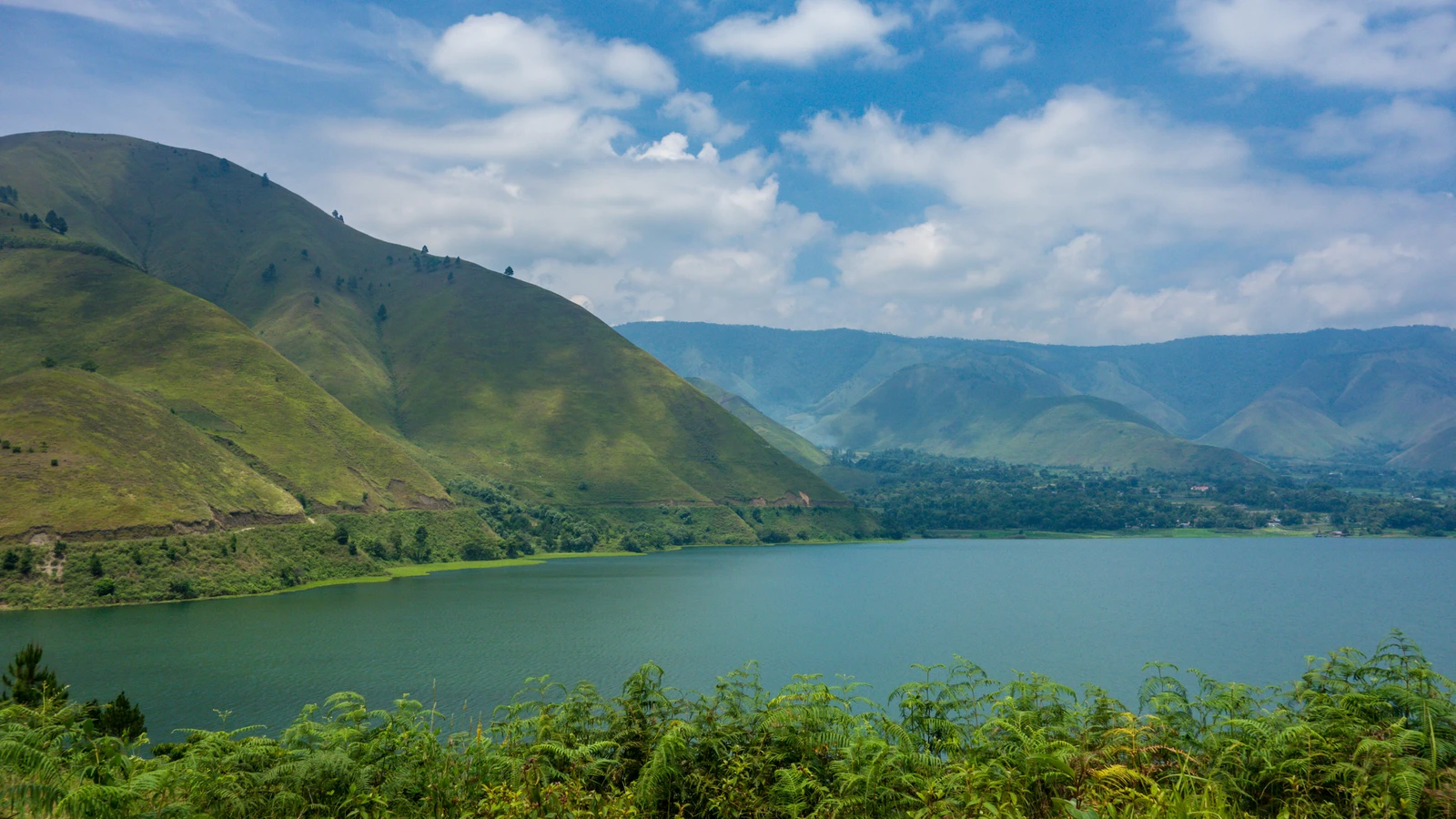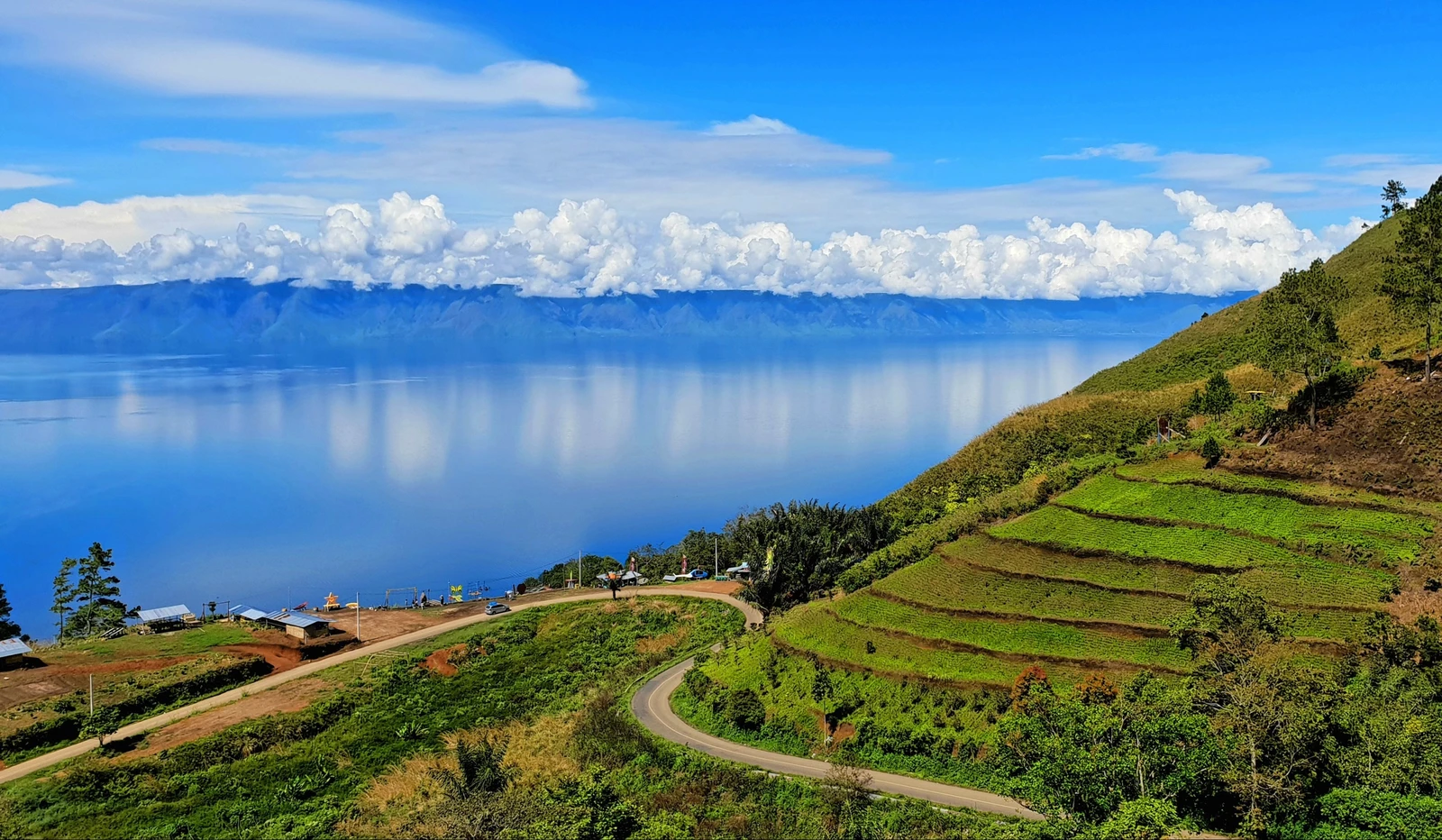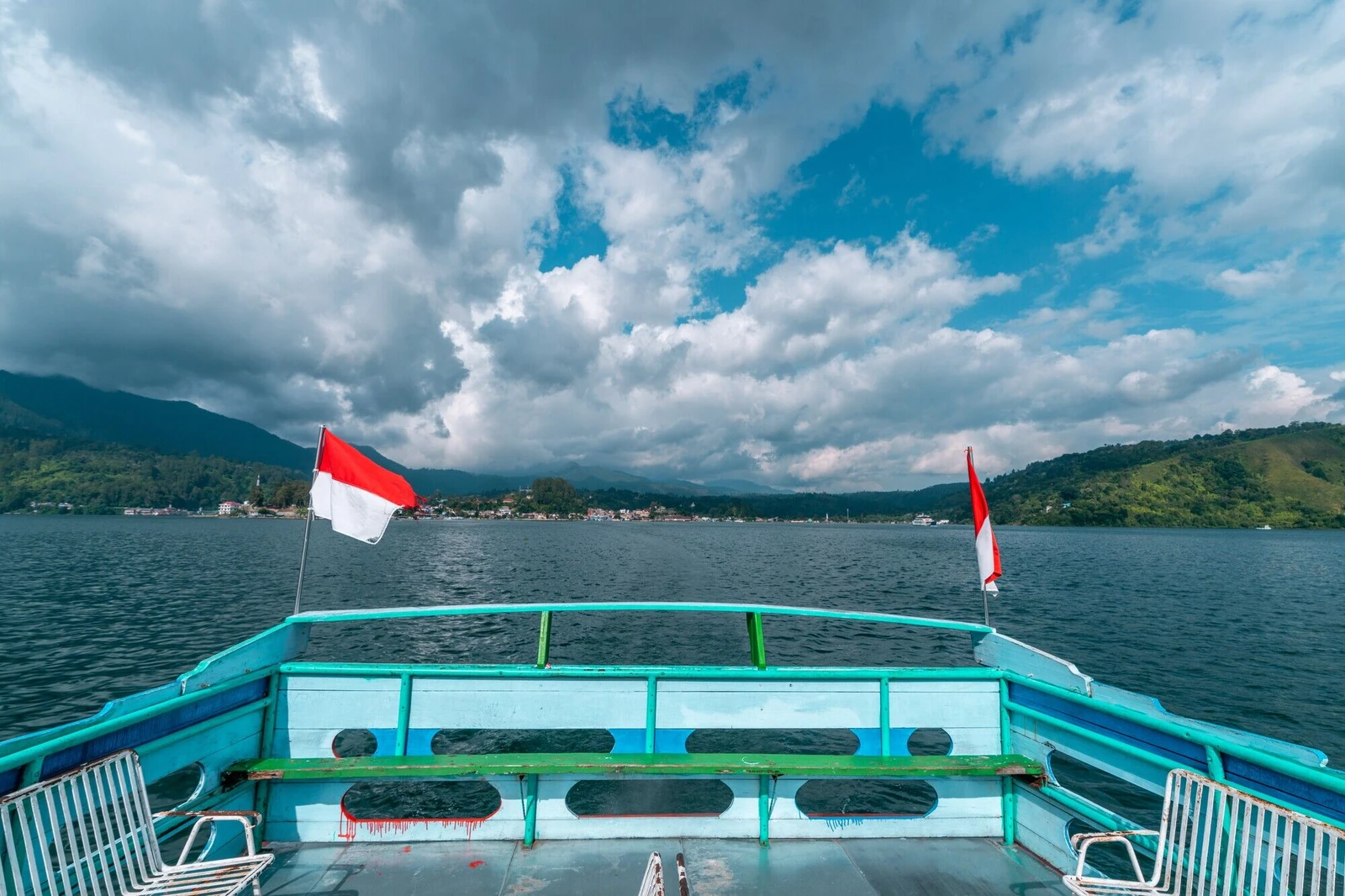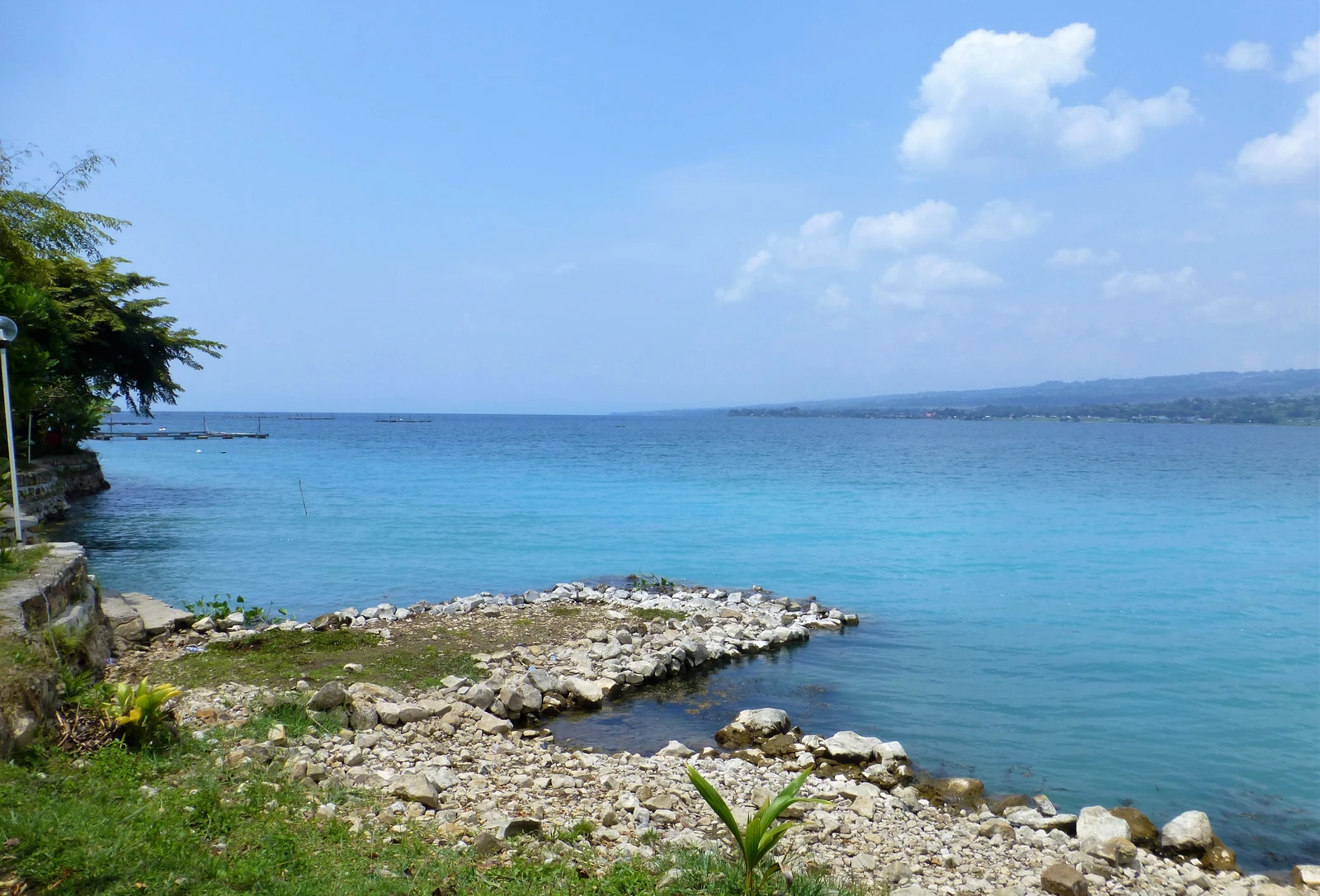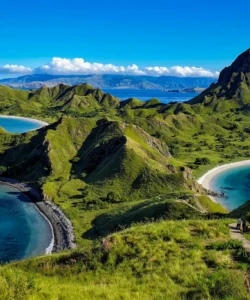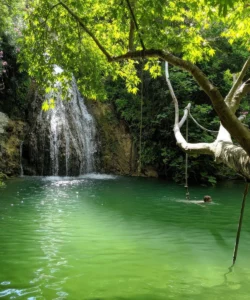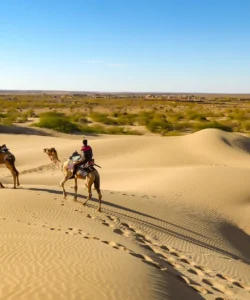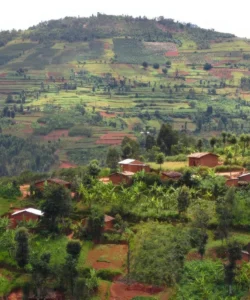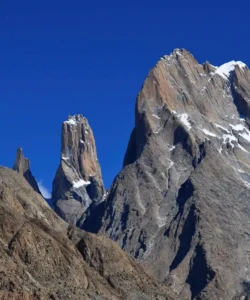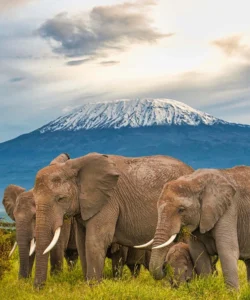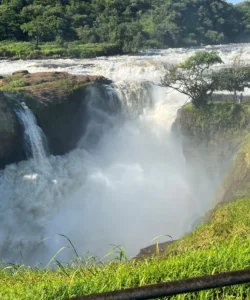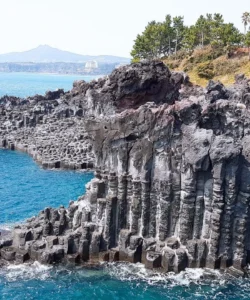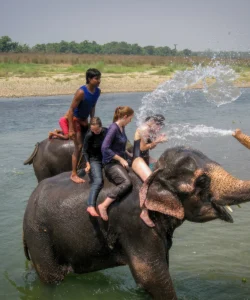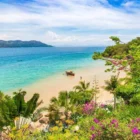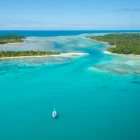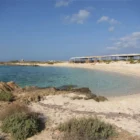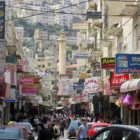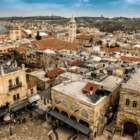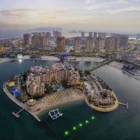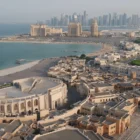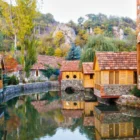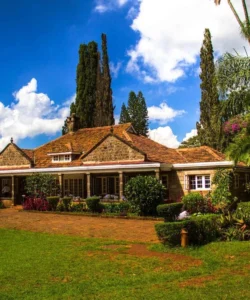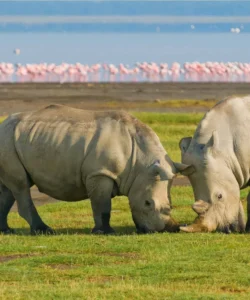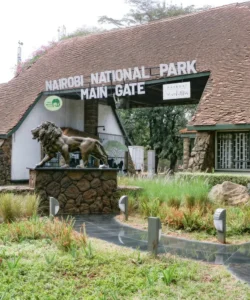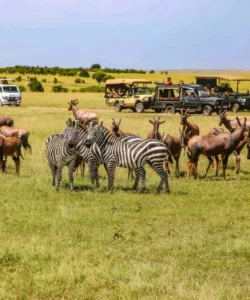Lake Toba is not just a lake; it’s a colossal natural wonder in North Sumatra, Indonesia, representing one of the most significant geological events in Earth’s history. It’s renowned for being the world’s largest volcanic lake and the site of a supervolcanic eruption that dramatically shaped global climate and human populations tens of thousands of years ago. At its heart lies Samosir Island, an island within a lake, on an island, creating a truly unique geographical and cultural landscape.
Listen to an introduction about Lake Toba

Name: Lake Toba (Indonesian: Danau Toba)
Address: North Sumatra Province, Indonesia. The main gateway town on the mainland is Parapat, and the most popular tourist hub on the island within the lake is Tuktuk on Samosir Island.
How to Get There:
Accessing Lake Toba typically involves flying into Medan and then a land and ferry journey:
- By Air: The closest international airport is Kuala Namu International Airport (KNO) in Medan, North Sumatra. KNO has direct flights from major Indonesian cities (Jakarta, Surabaya) and international hubs like Kuala Lumpur and Singapore.
- From Medan (KNO Airport) to Parapat (Mainland Gateway):
- Private Car with Driver (Recommended): This is the most comfortable and efficient option, taking approximately 3-4 hours via new toll roads. Many travelers pre-book this through hotels or tour operators.
- Bus: Public buses (e.g., Sejahtera buses) depart from Amplas Bus Station in Medan to Parapat. The journey can take 4-5 hours.
- Train + Bus: A less common option, you can take a train from Medan to Siantar (Pematangsiantar), then a local bus to Parapat. This typically takes 5-6 hours in total and might not allow you to catch the last ferry to Samosir.
- From Parapat to Samosir Island (Tuktuk/Tomok):
- Passenger Ferry: From Tigaraja Port in Parapat, passenger ferries regularly depart for Tuktuk and Tomok on Samosir Island. This journey takes about 30-45 minutes. These ferries can drop you directly at your chosen accommodation in Tuktuk.
- Car Ferry: From Ajibata Port (also in Parapat, a short distance from Tigaraja), larger car ferries cross to Tomok on Samosir Island. This is for those bringing vehicles.
Best Time to Visit:
The best time to visit Lake Toba is during the dry season, from March to October. During these months, the weather is generally sunny with less rainfall, and temperatures are pleasant (17–30˚C), making it ideal for outdoor activities and enjoying the lake’s beauty. Avoiding peak Indonesian holiday seasons can also lead to a more relaxed atmosphere.
Landscape and Architecture:
Lake Toba’s landscape is defined by its colossal scale, volcanic origins, and the unique cultural elements of the Batak people.
- Supervolcanic Caldera Lake: Lake Toba is the largest volcanic lake in the world and the result of one of Earth’s largest known explosive volcanic eruptions (a VEI 8 event) around 74,000 years ago. This cataclysmic eruption created a massive caldera, which subsequently filled with water, stretching approximately 100 kilometers (62 miles) long, 30 kilometers (19 miles) wide, and up to 505 meters (1,657 feet) deep.
- Samosir Island (Resurgent Dome): At the very center of Lake Toba lies Samosir Island, an island roughly the size of Singapore. This island is a “resurgent dome,” formed by the upward pressure of magma refilling the magma chamber beneath the caldera after the eruption. This “island in a lake on an island” (Sumatra) is a unique geographical phenomenon. Samosir itself has its own small lakes (e.g., Lake Aek Natonang), creating further geographical layers.
- Lush Green Hills and Mountains: The lake is encircled by steep caldera walls and rolling hills, covered in lush tropical rainforest and pine forests, providing a verdant backdrop and numerous panoramic viewpoints.
- Batak Traditional Architecture (Rumah Adat): Samosir Island is the heartland of the Toba Batak people, an indigenous ethnic group known for their distinctive traditional houses, or “rumah adat” (specifically “rumah bolon”). These houses are characterized by:
- Distinctive Saddle-Shaped, Sweeping Roofs: Often with “buffalo horn” like peaks, made traditionally from sugar palm fiber or now corrugated iron.
- Ornate Carvings (Gorga): The exterior walls, especially the gables, are intricately decorated with colorful, often red, black, and white “gorga” woodcarvings depicting various motifs (horned lion heads, snakes, lizards, mythological figures) meant to ward off evil spirits.
- Raised on Stilts: Houses are elevated on wooden piles, with the space beneath often used for animals or work.
- Large Gable Ends: Prominent and often decorated.
- Interior: Typically a large, open communal living space, traditionally without internal walls, to accommodate extended families.
These traditional houses can be seen in villages like Huta Siallagan and Tomok on Samosir Island.
- Ancient Stone Carvings and Tombs: Villages like Huta Siallagan feature ancient stone chairs and tables (Batu Parsidangan) used for traditional village meetings and even judicial/execution ceremonies. Tomok has the Old Tomb of King Sidabutar, a large, carved stone sarcophagus of the legendary first Batak king of Tomok, surrounded by other smaller tombs.
What Makes It Famous:
- World’s Largest Volcanic Lake and UNESCO Global Geopark: Lake Toba holds the distinction of being the largest volcanic lake globally and was recognized as a UNESCO Global Geopark in 2020. This highlights its immense geological significance.
- Site of a Supervolcanic Eruption: It is the caldera of the Toba supervolcano, which erupted approximately 74,000 years ago in one of Earth’s largest known explosive events. This eruption had global climatic impacts and is even theorized to have created a population bottleneck for early human populations.
- Samosir Island: “Island in a Lake on an Island”: The unique geographical feature of Samosir Island, a large island located within the caldera lake, itself located on the larger island of Sumatra, is a major draw and geographical marvel.
- Batak Culture: The lake is the spiritual and cultural heartland of the Toba Batak people. Visitors can immerse themselves in their unique customs, traditional architecture, music, and dances (like Tor-Tor dance), particularly on Samosir Island.
- Pristine Natural Beauty and Serenity: Despite its dramatic geological past, Lake Toba today offers a remarkably calm, serene, and picturesque environment. Its clear waters, fresh mountain air, and lush surroundings make it a perfect retreat.
- Diverse Activities: Visitors can enjoy swimming, kayaking, exploring traditional villages, visiting ancient tombs and stone chairs, waterfall hunting (e.g., Sipiso-Piso Waterfall, which plunges into a gorge on the north side of the lake), hiking to viewpoints (e.g., Beta Tuk-tuk Hill, Bukit Holbung), and enjoying local cuisine and live music.
- Less Crowded Alternative to Bali: Often described as a tranquil alternative to the more heavily touristed parts of Bali, Lake Toba offers an unspoiled and authentic Indonesian experience.
Differences from Some Other Wonders:
- Supervolcanic Origin and Scale: While other lakes are volcanic (e.g., Taal Lake in the Philippines), Lake Toba’s formation from a supervolcanic eruption (VEI 8) and its immense size (world’s largest volcanic lake) set it apart geologically and historically. Its impact on global climate and human history is unparalleled for a lake.
- Island-within-a-lake-on-an-island (Samosir): This specific nested geographical feature of Samosir Island is a highly unique and distinctive characteristic not commonly found in other famous lake destinations.
- Distinct Batak Culture: Unlike Bali’s Hindu culture or Java’s predominantly Muslim culture with Hindu/Buddhist temple heritage, Lake Toba offers an immersion into the vibrant and distinct Toba Batak culture, known for its unique traditional houses, music, and a blend of traditional beliefs with Christianity.
- Deep Water: As one of the deepest lakes in the world, its depth of over 500 meters contributes to its distinct ecosystem and character compared to shallower, warmer lakes.
- Calm, Oligotrophic Waters: Despite its massive size, the lake is often described as “oligotrophic” (nutrient-poor) with relatively scarce native fish fauna, leading to very clear and calm waters, distinguishing it from lakes with abundant aquatic vegetation or turbulent waters.
- Absence of Major Fauna for Safari: Unlike Komodo National Park with its dragons or African safari parks, Lake Toba’s primary appeal is its geological and cultural significance, not large terrestrial wildlife viewing.
